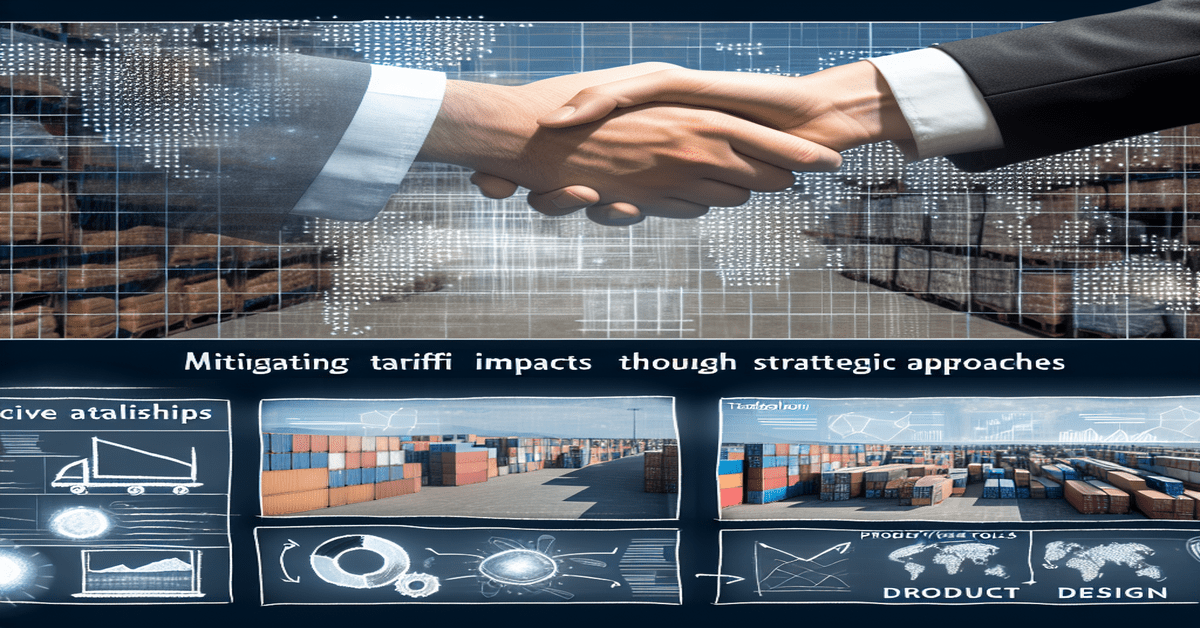Navigating the Tariff Landscape: How Technology Can Help Businesses Stay Ahead
In today’s global economy, businesses face numerous challenges, and one of the most significant is the impact of tariffs. As trade tensions continue to rise, companies must find innovative ways to mitigate the effects of these additional costs on their operations. Fortunately, technology offers a powerful solution to help businesses navigate this complex landscape and maintain their competitive edge.
The Power of Domestic Partnerships
One effective strategy for reducing the impact of tariffs is to **develop relationships with domestic suppliers**. By shifting away from international suppliers and partnering with local businesses, companies can minimize tariff-related costs and logistics expenses while potentially decreasing lead times[2]. This approach not only helps maintain supply chain reliability but also supports the local economy, fostering growth and innovation within the country.
However, finding the right domestic partners can be a daunting task. This is where technology comes into play. Digital platforms and databases can help businesses identify potential suppliers based on their specific needs, such as product offerings, production capacity, and location. By leveraging these tools, companies can quickly and efficiently connect with suitable domestic partners, streamlining the process of establishing new relationships.
Diversifying the Supply Chain
Another key strategy for mitigating the impact of tariffs is to **diversify the supply chain**. By gaining visibility into global supply networks, businesses can identify alternative sourcing options and choose suppliers from regions with favorable trade agreements[2]. This approach allows companies to spread their risk and minimize the burden of tariffs on their operations.
Technology plays a crucial role in facilitating supply chain diversification. Advanced analytics and digital platforms provide real-time data and insights into global supply chains, enabling businesses to make informed decisions about sourcing and logistics. By leveraging these tools, companies can optimize their supply networks, reduce costs, and improve overall efficiency.
The Power of Predictive Analytics
Predictive analytics is a rapidly growing field, with the market expected to reach $38 billion by 2028[2]. This powerful technology can help businesses reduce costs, improve quality, and address the uncertainty caused by tariffs. By analyzing vast amounts of data, predictive analytics algorithms can identify patterns and trends, enabling companies to anticipate potential disruptions and make proactive decisions.
For example, predictive analytics can help businesses forecast demand, optimize inventory levels, and identify potential supply chain bottlenecks. By leveraging these insights, companies can make data-driven decisions that minimize the impact of tariffs on their operations. Additionally, predictive analytics can help businesses identify opportunities for cost savings, such as by optimizing production processes or identifying alternative materials that are not subject to tariffs.
Redesigning for Success
In some cases, the most effective way to mitigate the impact of tariffs is to **revisit product design**. By redesigning products to use components that are not subject to tariffs, businesses can minimize the impact of these additional costs on their production processes[2]. This approach requires a deep understanding of the tariff landscape and a willingness to innovate and adapt.
Technology can support this process by providing tools for product design and simulation. Advanced software solutions allow businesses to virtually test and optimize their designs, reducing the need for physical prototypes and minimizing the risk of costly errors. By leveraging these tools, companies can quickly and efficiently redesign their products to minimize the impact of tariffs.
Embracing Digital Transformation
Ultimately, the key to navigating the tariff landscape lies in embracing digital transformation. By leveraging digital tools and platforms to manage supply chains, diversify suppliers, and optimize logistics, businesses can gain the real-time data and insights necessary for strategic decision-making[2]. This approach not only helps mitigate the impact of tariffs but also positions companies for long-term success in an increasingly competitive global market.
However, digital transformation is not a one-time event. It requires a continuous commitment to innovation and a willingness to adapt to changing circumstances. By fostering a culture of continuous improvement and embracing new technologies as they emerge, businesses can stay ahead of the curve and maintain their competitive edge in the face of tariffs and other challenges.
The Way Forward
As the global trade landscape continues to evolve, businesses must be proactive in their approach to mitigating the impact of tariffs. By leveraging technology to develop domestic partnerships, diversify supply chains, optimize operations, and redesign products, companies can position themselves for success in this challenging environment.
However, navigating this complex landscape requires expertise and strategic thinking. That’s where LeadsProMax.ai comes in. Our team of experienced strategists can help you identify the right technological solutions for your business, develop a customized plan for mitigating the impact of tariffs, and position your company for long-term success.
Don’t let tariffs hold your business back. Embrace the power of technology and partner with LeadsProMax.ai to take your operations to the next level. Contact us today to learn more about how we can help you navigate the tariff landscape and achieve your goals.
#TariffMitigation #SupplyChainOptimization #PredictiveAnalytics #DigitalTransformation
-> Original article and inspiration provided by LeadsProMax.ai
-> Connect with one of our LeadsProMax.ai Strategists today at LeadsProMax.ai


